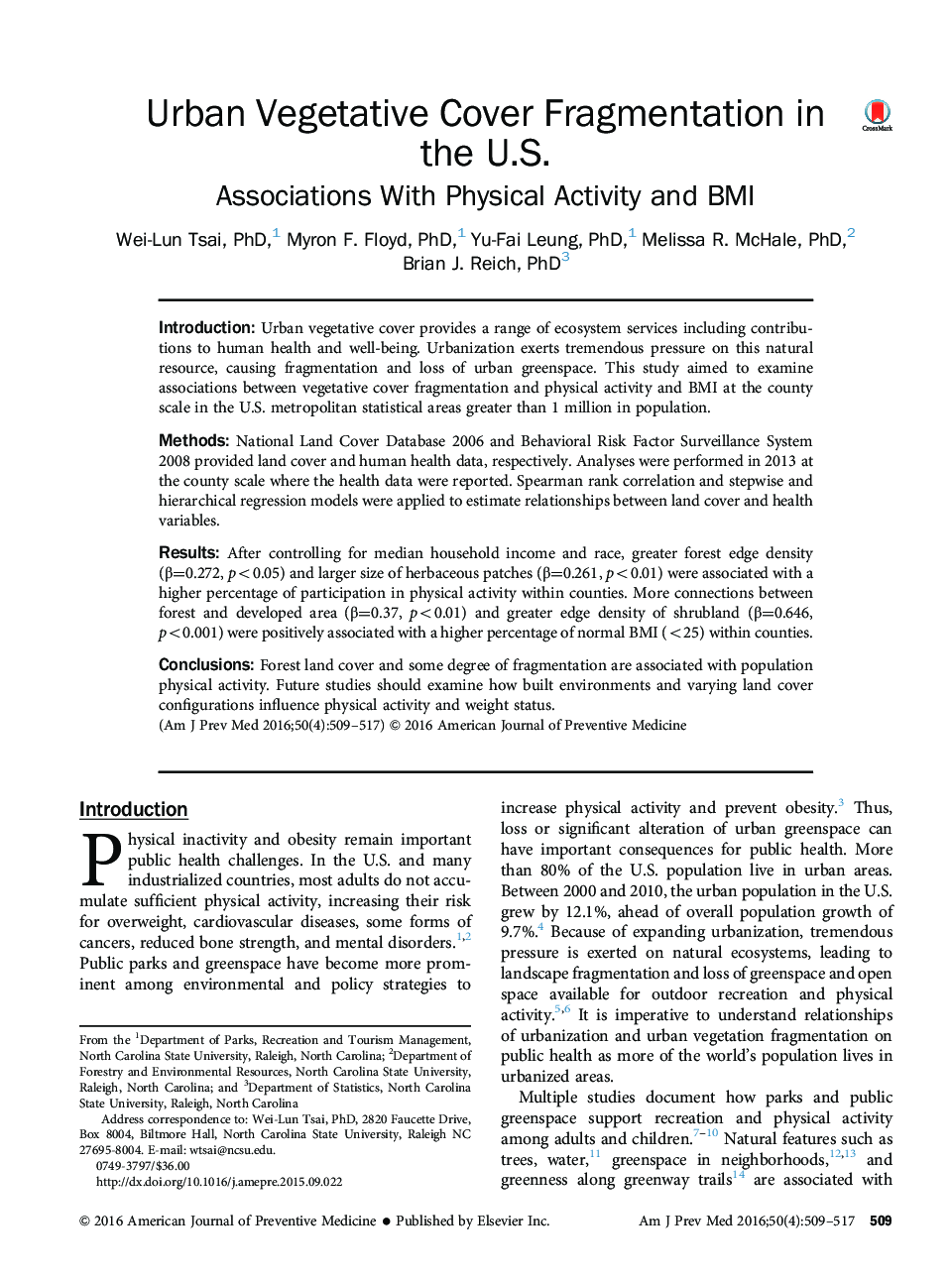| کد مقاله | کد نشریه | سال انتشار | مقاله انگلیسی | نسخه تمام متن |
|---|---|---|---|---|
| 6237217 | 1608625 | 2016 | 9 صفحه PDF | دانلود رایگان |

IntroductionUrban vegetative cover provides a range of ecosystem services including contributions to human health and well-being. Urbanization exerts tremendous pressure on this natural resource, causing fragmentation and loss of urban greenspace. This study aimed to examine associations between vegetative cover fragmentation and physical activity and BMI at the county scale in the U.S. metropolitan statistical areas greater than 1 million in population.MethodsNational Land Cover Database 2006 and Behavioral Risk Factor Surveillance System 2008 provided land cover and human health data, respectively. Analyses were performed in 2013 at the county scale where the health data were reported. Spearman rank correlation and stepwise and hierarchical regression models were applied to estimate relationships between land cover and health variables.ResultsAfter controlling for median household income and race, greater forest edge density (β=0.272, p<0.05) and larger size of herbaceous patches (β=0.261, p<0.01) were associated with a higher percentage of participation in physical activity within counties. More connections between forest and developed area (β=0.37, p<0.01) and greater edge density of shrubland (β=0.646, p<0.001) were positively associated with a higher percentage of normal BMI (<25) within counties.ConclusionsForest land cover and some degree of fragmentation are associated with population physical activity. Future studies should examine how built environments and varying land cover configurations influence physical activity and weight status.
Journal: American Journal of Preventive Medicine - Volume 50, Issue 4, April 2016, Pages 509–517